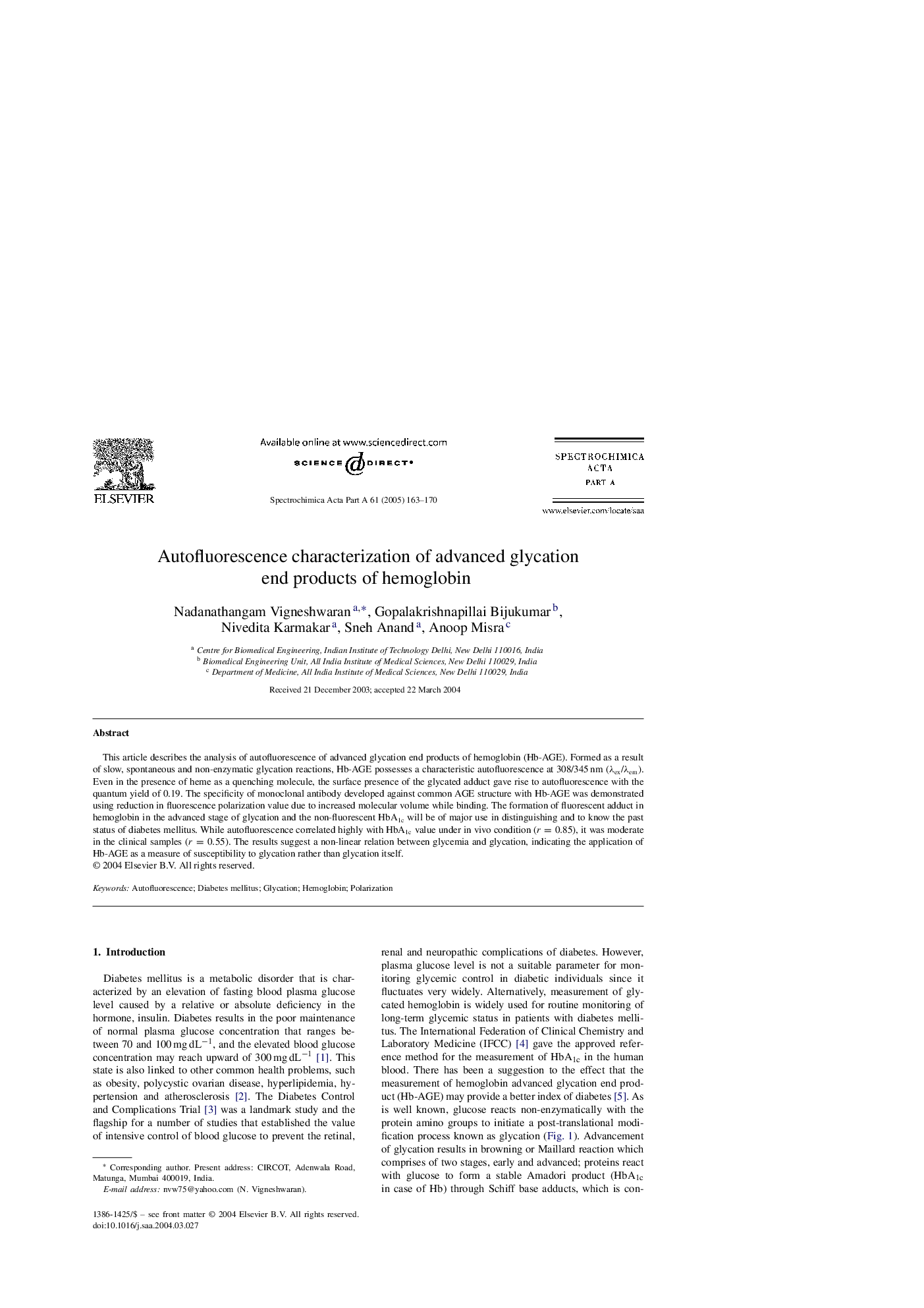| Article ID | Journal | Published Year | Pages | File Type |
|---|---|---|---|---|
| 9757102 | Spectrochimica Acta Part A: Molecular and Biomolecular Spectroscopy | 2005 | 8 Pages |
Abstract
This article describes the analysis of autofluorescence of advanced glycation end products of hemoglobin (Hb-AGE). Formed as a result of slow, spontaneous and non-enzymatic glycation reactions, Hb-AGE possesses a characteristic autofluorescence at 308/345 nm (λex/λem). Even in the presence of heme as a quenching molecule, the surface presence of the glycated adduct gave rise to autofluorescence with the quantum yield of 0.19. The specificity of monoclonal antibody developed against common AGE structure with Hb-AGE was demonstrated using reduction in fluorescence polarization value due to increased molecular volume while binding. The formation of fluorescent adduct in hemoglobin in the advanced stage of glycation and the non-fluorescent HbA1c will be of major use in distinguishing and to know the past status of diabetes mellitus. While autofluorescence correlated highly with HbA1c value under in vivo condition (r=0.85), it was moderate in the clinical samples (r=0.55). The results suggest a non-linear relation between glycemia and glycation, indicating the application of Hb-AGE as a measure of susceptibility to glycation rather than glycation itself.
Related Topics
Physical Sciences and Engineering
Chemistry
Analytical Chemistry
Authors
Nadanathangam Vigneshwaran, Gopalakrishnapillai Bijukumar, Nivedita Karmakar, Sneh Anand, Anoop Misra,
